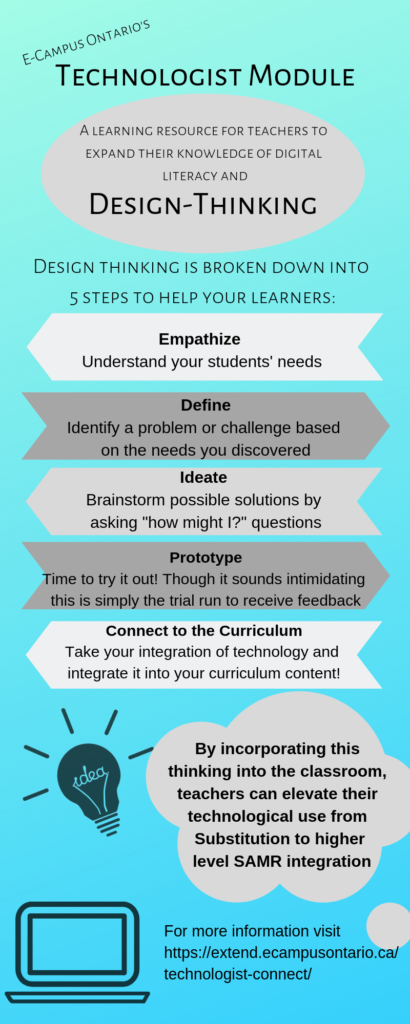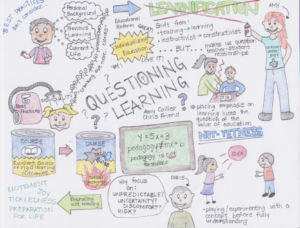I completed my third multimedia reflection on the Ecampus Ontario Technologist Module using Canva. Canva is a medium I was somewhat familiar with before this assignment. I have used it to make posters and promotional materials, but this was my first experience making an infographic. I still found it very user-friendly, but struggled with designing the layout so that it was visually appealing while still getting a lot of information across with it!
I found the Technologist Module very interesting to go through. As someone who generally likes more linear presentation styles, I usually get lost in modules similar to this one. This module, however demonstrated linear thinking with the process to incorporate design-thinking in your classroom, so I found it easier to follow. There were many hyperlinks, but I would save those until after I read the piece and see what I wanted further elaboration on. I absolutely loved the use of Padlet to allow teachers to share what has or hasn’t worked, and what they have implemented in their classrooms. This meant that even when I’m sitting at home going through the module, I have the feeling of community with other educators, and somewhere to share my thoughts. Here is my infographic summary of the module’s explanation of design thinking (click the hyperlink for a closer look)!

As a learner, throughout my elementary and secondary school education, I don’t believe this was something my teachers ever tried to integrate into my classes. As technology was beginning to show itself more in education, I feel that most of the teachers I had focused on the S(ubstitution) in the SAMR model. This included using the Smartboard instead of the chalkboard, or Desmos for graphing instead of sketching every graph. In this sense, technology was integrated into the classroom on the surface without changing the lessons from what they could be without technology.
Educators now, and the next generation of educators here on this blog, have more of a focus on the augmentation, modification, and redefinition of the SAMR model. This means that not only will students be more engaged, but we can more readily address the needs of our students through the process outlined above, as well as by incorporating this thinking into our differentiation for students with exceptionalities.
Overall, I think this module elevated my thinking of technological integration in the classroom, in addition to teaching without technology. This process is fundamental to teaching, whether individuals choose to integrate technology or not. The module used the analogy of architects, who don’t design buildings for themselves, but keep in mind the needs of the individuals that will be using the structure. So although technology makes it easier to differentiate and maintain student engagement, the design-thinking process should be at the forefront of every teacher’s mind.
Thanks for reading my thoughts! Sorry if I got this song in your head.
Kate Hatfield

